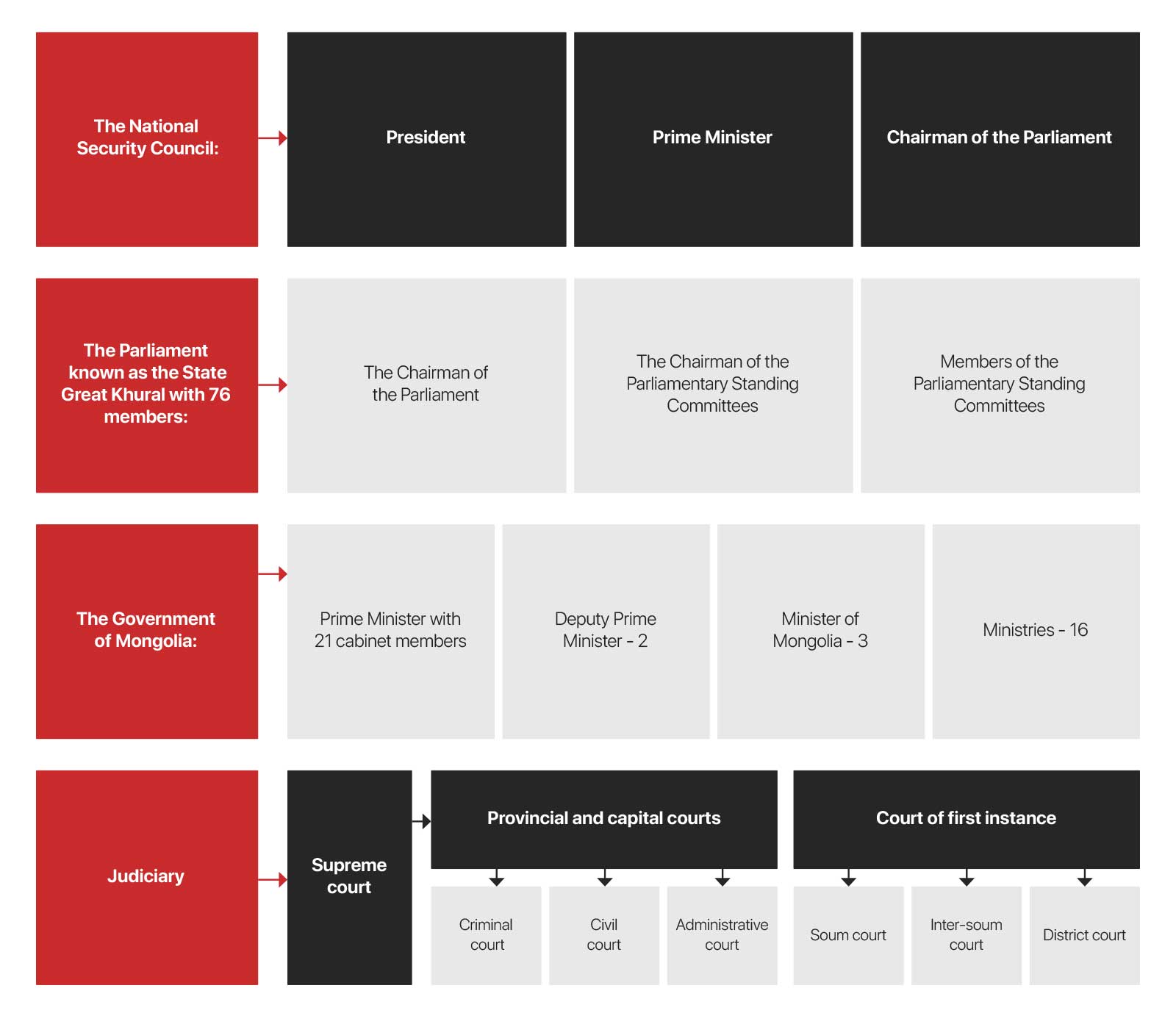After the fall of the communist regime, Mongolia transitioned to a democratic country in 1990s. The country’s new Constitution, enacted in 1992, established Mongolia as a parliamentary county, with legal guarantees to reinforce democracy. The Constitution has been amended twice since its ratification.
The President
is the Head of State, representing the unity of the people, and serves as the Commander-in-Chief of the Armed Forces. The 2019 amendment to the Constitution limits the President, who is elected directly by the people, to one six-year term, as opposed to the previous two four-year terms.
The current President of Mongolia is Ukhnaa Khurelsukh.
Parliament
The Parliament of Mongolia, known as the State Great Khural, is the supreme law-making institution. Parliamentary elections are held every four years, with 76 members elected from single-seat constituencies.
Currently, the ruling party, the Mongolian People’s Party, holds 63 seats, while the opposing Democratic Party holds 10 seats. One seat is held by an independent member and two by members of other parties.
Government
The highest executive authority in Mongolia is the Government of Mongolia. The political party with the most seats in an election selects the Prime Minister, who then appoints the members of the Cabinet.
The current Prime Minister of Mongolia is Oyun-Erdene Luvsannamsrai, serving since January 2021.
Judiciary
The Judiciary of Mongolia consists of a three-tier court system. After the revision of the Law of the Judiciary in 2021, limitations were placed on the powers of the government, parliament, and president to influence the selection and removal of judges, increasing the independence of the judiciary.
